
With its towering skyscrapers and unrelenting energy, Kuala Lumpur’s urban landscape can frequently make you long for a change of scenery. You might imagine far-off coastal towns or isolated national parks when you’re craving fresh air & a new viewpoint. An hour’s drive away, however, is a location that feels like a gateway to a different continent, tucked away in the highlands of Pahang. Bukit Tinggi is a surprising and easily accessible haven where the deep peace of a traditional Japanese garden blends with the architecture of a medieval French village. This post will help you plan your trip, covering everything from the travel logistics to the special experiences you can expect. You start your journey to Bukit Tinggi’s cool climate with a fairly quick and easy drive from the capital.
Key Takeaways
- Clear communication is essential for effective teamwork
- Active listening is crucial for understanding team members’ perspectives
- Setting clear goals and expectations helps to keep the team focused
- Regular feedback and open communication can help address any issues early on
- Celebrating achievements and milestones can boost team morale and motivation
Its convenient location makes it the perfect place for a relaxing weekend retreat or day trip. To ensure a smooth visit, the first step is to comprehend your travel options. Taking the car to Bukit Tinggi. Vehicles are by far the most popular & practical means of getting to Bukit Tinggi. The trip is enjoyable & lets you see how the landscape gradually changes.
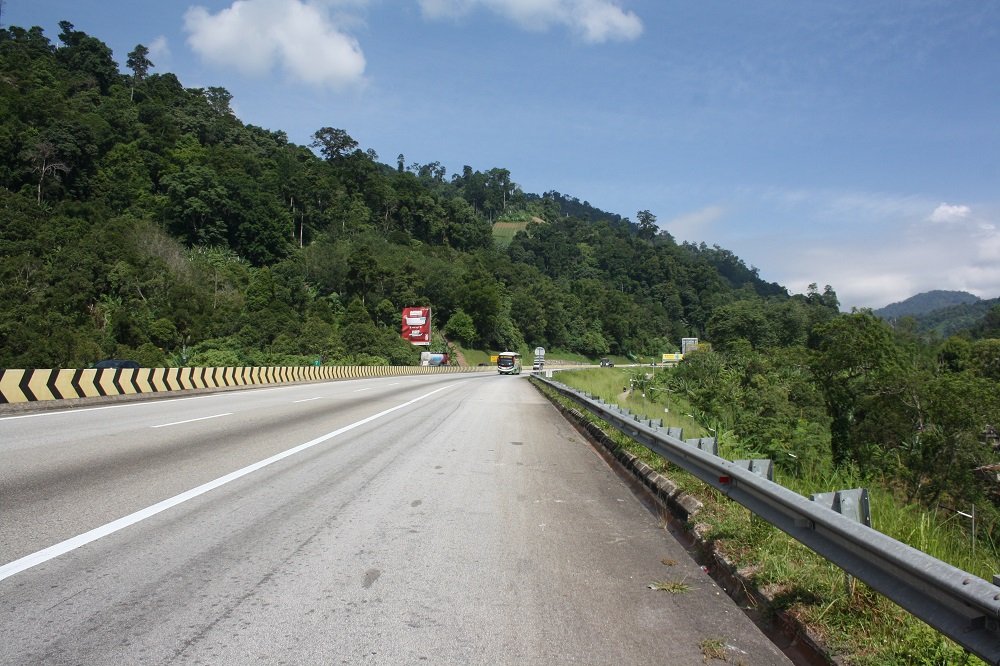
The Karak Expressway (E8) will merge as you exit Kuala Lumpur’s congested urban sprawl. Through lush tropical rainforest and undulating hills, this well-maintained highway serves as a green corridor. A gradual escape from the pressures of city life, the drive itself is a part of the experience. In general, the journey takes between sixty and ninety minutes, contingent on Kuala Lumpur traffic. You should have your Touch ‘n Go card fully charged because you will have to pay a toll on the Karak Expressway.
After you pass the Bentong & Kuantan signs, you will notice the obvious signs for Berjaya Hills or Bukit Tinggi. You’ll enter a winding mountain road after the exit. The air gets notably crisper and colder as you climb higher. With its dramatic curves and breathtaking views of the valley below, this last section of the drive marks the beginning of a new world. Although it can get crowded on weekends and public holidays, there is plenty of parking close to the major attractions. Public Transport & Alternatives.
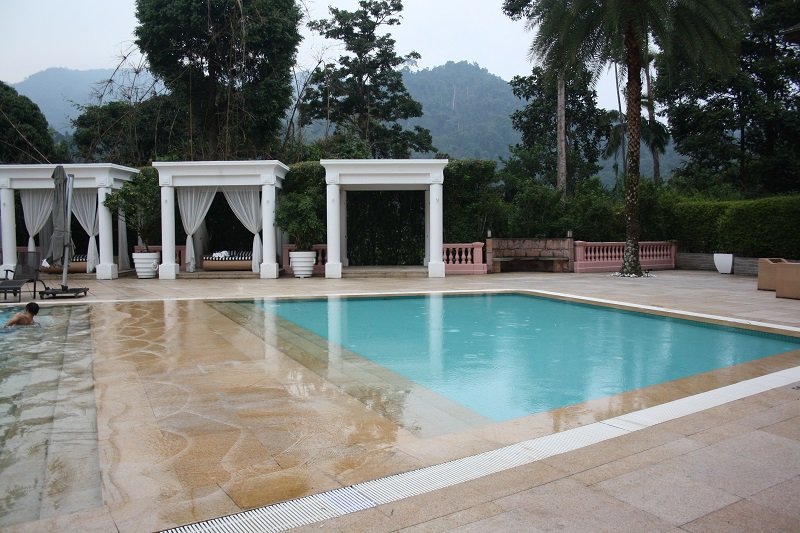
Though they might need more preparation, there are other options to think about if you would rather not drive. A dedicated shuttle service used to run straight to the resort from Berjaya Times Square in Kuala Lumpur. You must visit the official Berjaya Hills Resort website for the most up-to-date details on shuttle services before organising your trip around this option, though, as schedules and availability are subject to change.
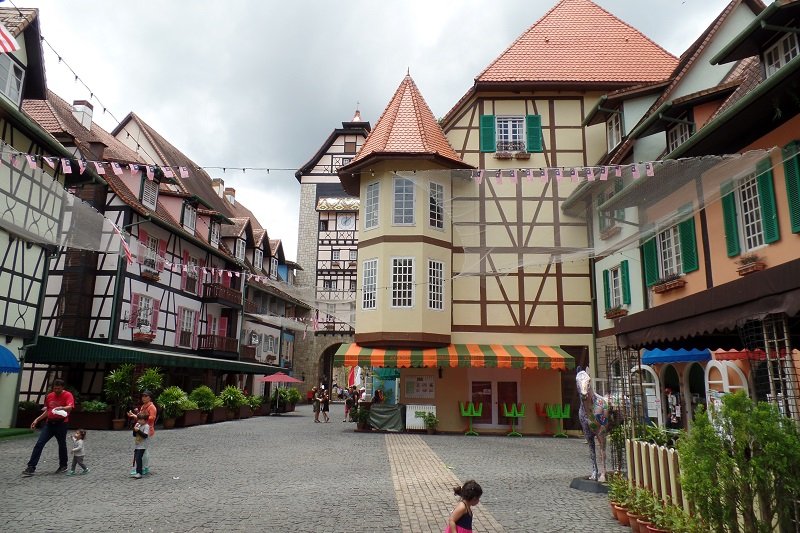
Also, for a one-way trip from Kuala Lumpur to Bukit Tinggi, ride-hailing services such as Grab are an option. It will be far more expensive than driving yourself, and finding a way back will be the biggest obstacle. Finding a driver who is willing to make the journey back down to the city can be challenging and uncertain because of the resort’s remote location.
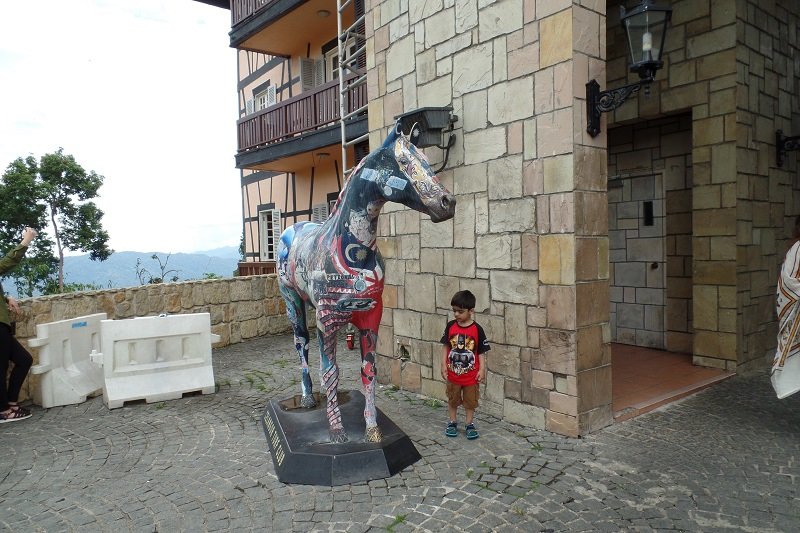
For this reason, booking a taxi or private car rental for a round-trip may be a more dependable—albeit more costly—option if you are not driving your car. You will reach the main entrance gate to the Berjaya Hills resort area after making the picturesque drive up the mountain. The entry pass, which is your key to opening the special attractions inside, can be bought here. The procedure is simple and meant to get you exploring as soon as possible. Entry Gateway and Startup Expenses.
The primary toll booth at the resort’s base is required to enter Colmar Tropicale or the Japanese Village. There is an admission fee per person here. The cost is normally about RM16 for adults & a little less for kids, according to recent information, but it’s a good idea to check online for the most recent rates as they may vary. This one-time payment serves as a passport to the resort’s main attractions spread across its vast grounds, not just an admission fee.
After making your payment, you are allowed to drive up to the parking lots for the French-themed village and other attractions. Your ticket or receipt might be required for verification within the resort, so don’t forget to save it. What comes with your ticket? Colmar Tropicale (the French Village), the Japanese Village (which includes the Botanical Garden), and Rabbit Park are the three main themed areas that are accessible with your admission ticket. The resort’s free shuttle service is especially practical.
Connecting the different attractions, this service operates in an uninterrupted loop. To get to the Japanese Village, which is higher up the hill, you can park your car at Colmar Tropicale and take the shuttle. This spares you from having to navigate the steep, winding roads between the attractions and look for parking once more. It’s simple and hassle-free to move between these very different cultural worlds thanks to the shuttle service’s dependability and frequency.
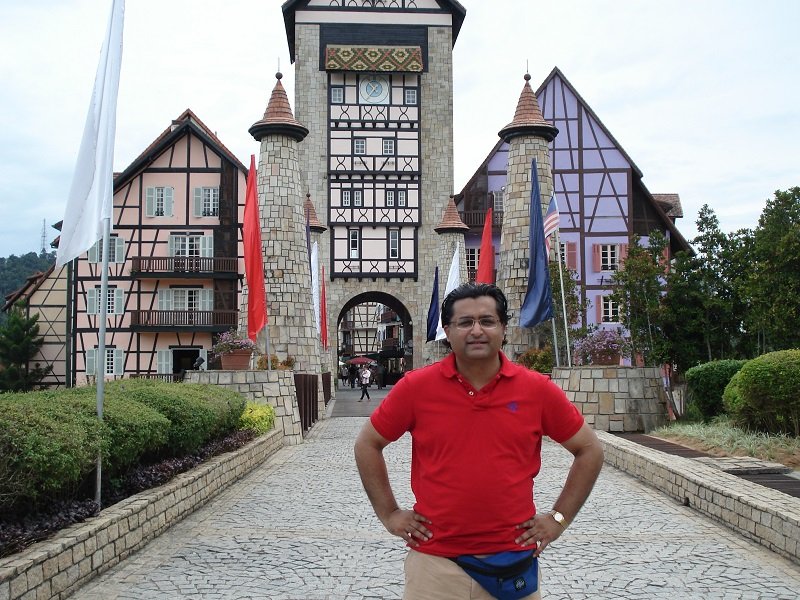
Colmar Tropicale is probably going to be your first destination after parking. It is like entering a wardrobe & entering a different world when you pass through its main archway. Immediately, there is a noticeable shift in the atmosphere and architecture. You’ve left Malaysia & entered a charming, idyllic village that appears to have been taken from the northeastern French region of Alsace.
The atmosphere and architecture. The village is an architectural replica of the French town of Colmar from the 16th century. From the vibrant half-timbered buildings and the cobblestone courtyard to the recognisable clock tower that serves as the focal point of the village, the design is incredibly detailed. Warm yellows, gentle pinks, and rustic oranges make up the buildings’ colour scheme, which also houses a hotel, eateries, cafes, and gift shops.
The central square is surrounded by a small moat with elegant black and white swans, which heightens the atmosphere of a fairy tale. You get the impression that you are in a European village thousands of miles away, thanks to the cool mountain air, which is frequently accompanied by a light mist. It is designed as a place to walk, find a little bench to sit on, and just take in the distinctive surroundings. The Village’s activities. Colmar Tropicale offers a variety of activities, but the primary one is taking in the atmosphere.
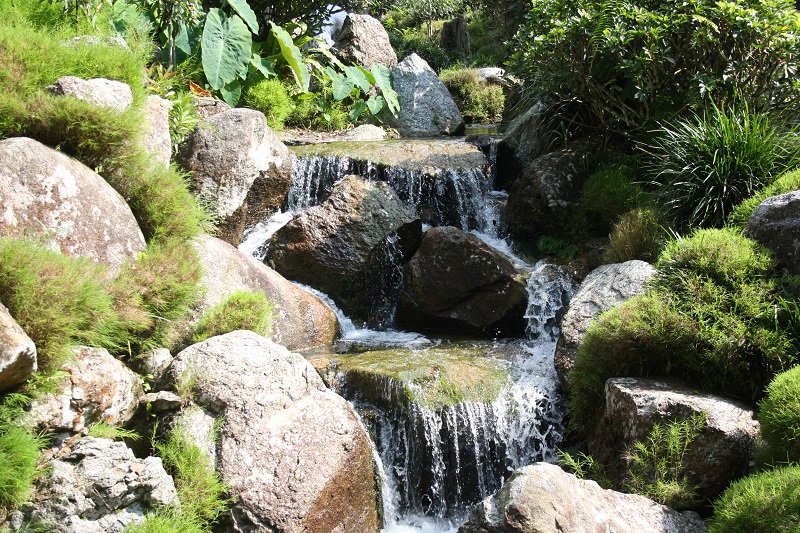
To get a broad view of the village & the verdant hills of the Titiwangsa mountain range, you can ascend the viewing tower. A great appreciation of the resort’s size and remote beauty can be gained from the top view. Especially on weekends, the village square frequently hosts street shows and other entertainment, which livens up the otherwise peaceful atmosphere.
A range of dining options is available here. An informal lunch at one of the bistros, a more formal dinner at one of the restaurants, or a coffee & croissant at a French-style bakery are all options. A variety of trinkets and mementos to commemorate your trip are available at the souvenir shops.
Discovering the charming details, such as window boxes filled with flowers and whimsical fountains, while exploring the narrow lanes is a draw in and of itself. Colmar Tropicale is a European fantasy, but a quick shuttle ride or drive up the hill will take you to the Japanese Village, a completely different world. This attraction, which is 3,500 feet above sea level, provides a deeply peaceful & culturally immersive experience.
It serves as evidence of skilful craftsmanship & the quest for ecological balance. An Adventure in Peace. The change in sound is the first thing you’ll notice as you get closer to the Japanese Village. Water flowing gently and the sound of wind whispering through the trees take the place of the faint buzz of the French village.
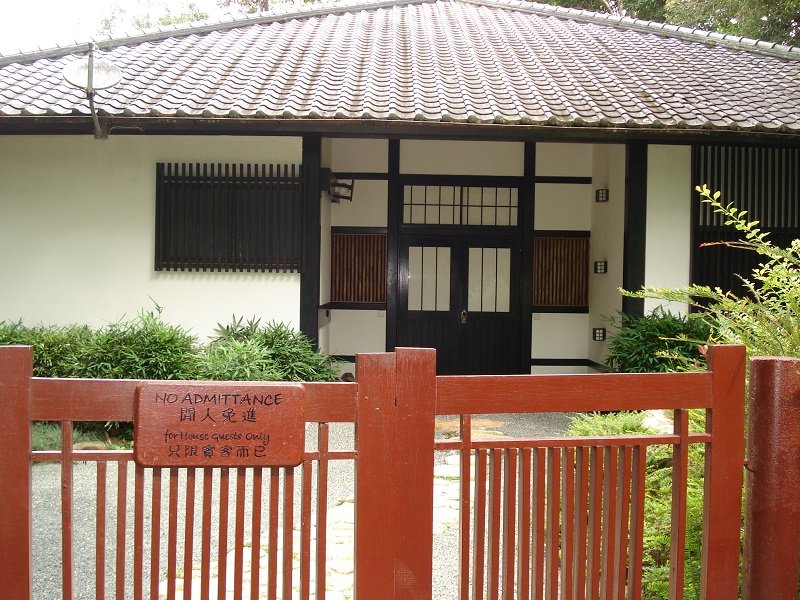
It’s worth noting that this place was the first garden with a Japanese theme constructed outside of Japan. Renowned Japanese architect Kaio Ariizumi designed it, and a group of 22 talented Japanese artisans built it using traditional methods and imported materials. In every little detail, this commitment to authenticity is apparent. A straightforward wooden gate at the entrance welcomes you into a haven intended for peaceful reflection. A tour of the Japanese Garden.
The Japanese Garden is the focal point of the community. With all the traditional components of Japanese garden philosophy, the landscape has been painstakingly designed. A koi pond in the middle, teeming with colourful orange and white fish, reflects the sky & the nearby pine and maple trees. You pass by traditional stone lanterns, cross tiny wooden bridges, & follow winding stone paths through the garden. Your stroll is continuously accompanied by a calming soundtrack from a tiny, tumbling waterfall.
A sense of harmony and tranquillity is created by the deliberate placement of each rock, plant, and building. The garden invites you to pause, take a deep breath, and enjoy the basic beauty of nature because it is a living painting that changes with the light and the seasons. The Tea House and Kimono Experience. The chance to rent a traditional kimono is one of the most well-liked activities in the Japanese Village. You can get dressed by the staff and select from a variety of vibrant kimonos and obis (sashes) for a nominal fee.
Wearing traditional Japanese clothing (kimono) while strolling along the tranquil garden paths creates a unique and engrossing experience that enhances the atmosphere of the location & makes for stunning photos. A traditional Japanese tea house is located next to the garden. You can take part in Chanoyu, a formal tea ceremony, here. The ceremony, which is led by a kimono-clad host, is a lovely and contemplative custom where you can learn how to make and enjoy matcha (green tea). It is a serene & culturally enlightening experience that provides understanding of a fundamental aspect of Japanese culture.
In addition to the ceremony, the Tea House serves as a Tatami Spa, providing soothing services in a peaceful environment. The Garden of Botany. The Japanese Tea House is a short stroll from the Botanical Garden.

This area provides a more rustic & natural experience than the meticulously planned and maintained Japanese Garden. A trail with clear signage winds through a section of unspoiled Malaysian rainforest. Ancient trees, exotic flowers, and a variety of native plants can all be seen here. The path is accessible to the majority of visitors due to its relative ease of walking.
It offers a stunning contrast to the themed villages and serves as a reminder of the highlands’ inherent tropical splendour. Bukit Tinggi is known for its Colmar Tropicale & Japanese Village, but it also has a number of other attractions that appeal to a wide range of interests, from thrill-seekers to families with small children. The Adventure Park. The Adventure Park, which is close to Colmar Tropicale, provides a variety of strenuous outdoor activities for those looking for a rush.
A long flying fox ride that takes you high above the rainforest canopy is an exciting experience. The park also has a climbing wall, rope obstacles, & a canopy walk. Paintball is a fun activity that can be organised for groups and is set against a stunning natural setting.
The park where rabbits live. A popular family attraction, Rabbit Park is a delightful and engaging place to be. Dozens of amiable rabbits of different breeds live there, roaming around freely in a spacious, open space.
You can spend time petting and interacting with these kind animals as well as buy feed for a nominal fee. It is a straightforward but enjoyable activity that makes both kids and adults happy. Paths for horses. Riding a horse through the picturesque Berjaya Hills is another way to experience the area.
Guided horseback riding sessions are available at the resort’s stable, & you will travel through the nearby hills and forests on designated trails. From short, easy paddock rides for novices and kids to longer, more daring trail rides for more seasoned horseback riders, the rides accommodate a range of ability levels. It’s an unusual & tranquil way to get in touch with the highlands’ natural surroundings.
A trip to Bukit Tinggi is a delightful contrast exercise. There, you can spend a day taking a stroll through the Malaysian rainforest, having breakfast in “France,” and attending a tea ceremony in “Japan.”. It’s the ideal reminder that sometimes the most unexpected travel experiences are the ones that are closest to home, providing a total escape from the known without requiring a protracted & taxing journey.
This highland retreat offers a diverse range of experiences that are both affordable & accessible, whether your goals are cultural immersion, peaceful surroundings, or easy family fun.
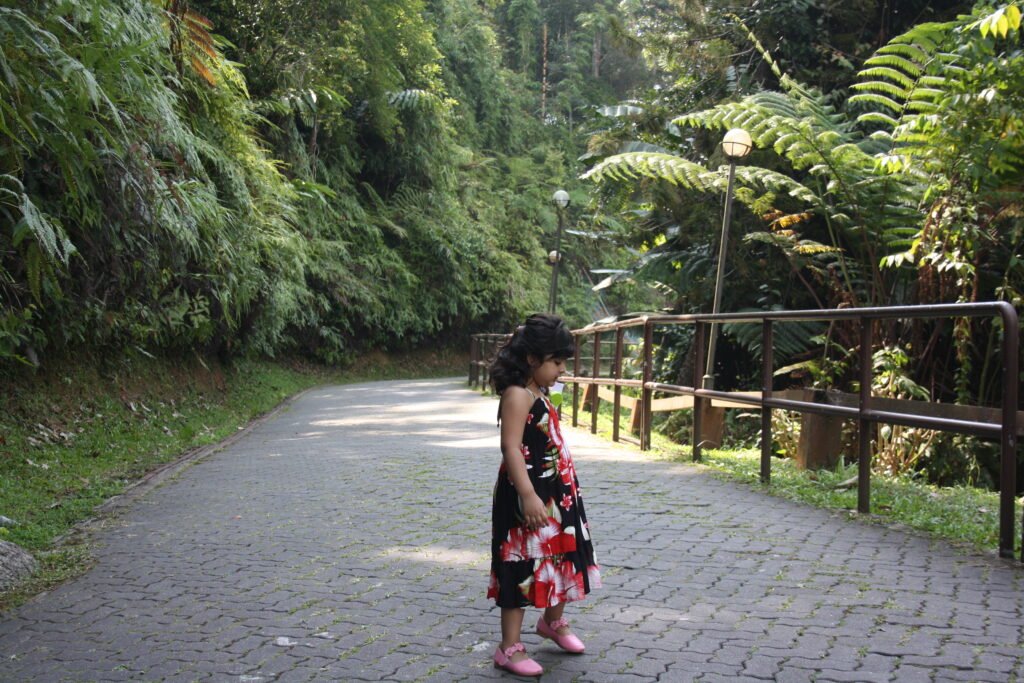
FAQs
What is a Japanese garden?
A Japanese garden is a traditional type of garden in Japan that is designed to create a miniature landscape. It often includes elements such as water, rocks, moss, and pruned trees, and is meant to evoke a sense of peace and tranquillity.
What are the characteristics of a Japanese garden?
Japanese gardens typically feature natural elements such as water, rocks, and plants, as well as man-made elements such as bridges, lanterns, and pathways. They are designed to create a sense of harmony and balance, and often incorporate principles of Zen Buddhism.
What is Bukit Tinggi in Pahang known for?
Bukit Tinggi in Pahang, Malaysia, is known for its picturesque landscapes, cool climate, and European-inspired architecture. It is a popular tourist destination, offering attractions such as the Colmar Tropicale French-themed resort, Japanese Village, and botanical gardens.
What can visitors expect to see at the Japanese Garden in Bukit Tinggi?
The Japanese Garden in Bukit Tinggi features traditional Japanese landscaping, including ponds, bridges, and carefully manicured plants. Visitors can expect to experience a serene and peaceful environment, with opportunities for relaxation and contemplation.
